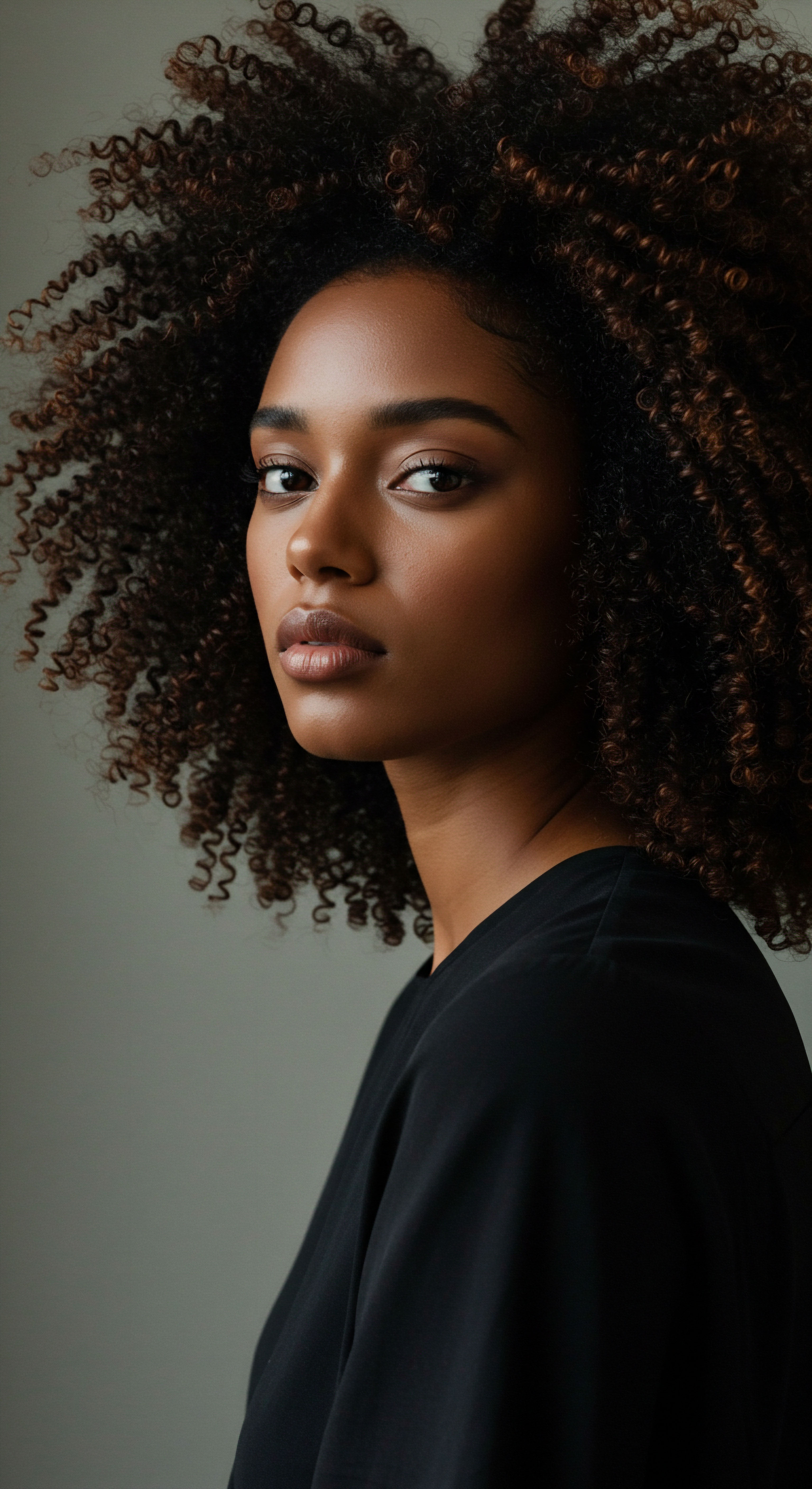
Roots
The delicate dance between hair and moisture holds a special kind of wonder, particularly for coils and curls. Many have observed how a misty morning can transform defined spirals into a halo of soft cloud, or how a simple rinse can bring forth a lively spring. This immediate, palpable response speaks to something fundamental about these hair types, a deeply personal connection to the very air around us. It is an invitation to peer closer, to truly understand the foundational elements that orchestrate this unique interaction, moving beyond surface observations to the very essence of hair’s being.
At its core, hair is a complex protein structure, primarily composed of Keratin. This fibrous protein provides hair its strength and shape. However, the architecture of this protein differs significantly across hair types, dictating how each strand interacts with its environment, especially water.
The shape of the hair follicle, a tiny pocket in the scalp where hair grows, plays a primary role in determining whether hair is straight, wavy, or coiled. Straight hair emerges from round follicles, while an increasingly oval or elliptical follicle produces waves, curls, and ultimately, tight coils.
The inherent shape of the hair follicle determines the very form of a strand, from straightness to the tightest coil.
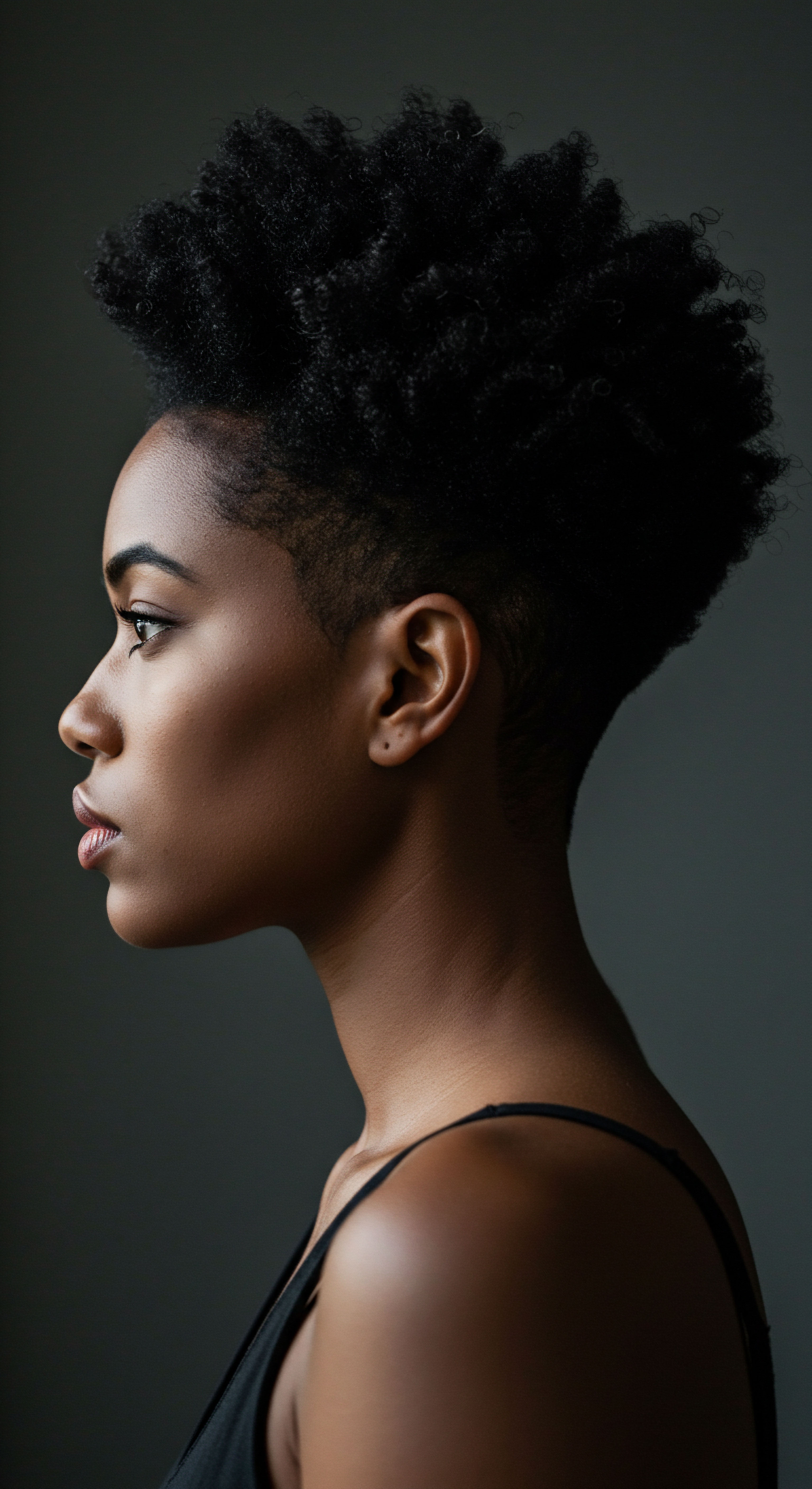
The Architecture of the Hair Strand
Each strand of hair, regardless of its external appearance, consists of three primary layers ❉
- Cuticle ❉ This outermost layer functions as the hair’s protective shield, composed of overlapping, scale-like cells, much like shingles on a roof. In straight hair, these cuticles tend to lie flat and smooth. For coiled and curly hair, however, the cuticle layers are often more raised or lifted, creating a less uniform surface. This structural difference has a direct bearing on how moisture enters and leaves the hair shaft. A more open cuticle can allow water to enter and escape more readily, contributing to both absorption and potential dryness.
- Cortex ❉ Positioned beneath the cuticle, the cortex makes up the bulk of the hair strand, accounting for approximately 90% of its total weight. This central region houses the keratin proteins, along with melanin, which gives hair its color. The cortex is responsible for hair’s mechanical properties, including its elasticity and strength. In coiled and curly hair, the distribution of keratin within the cortex is often uneven, contributing to the strand’s natural bends and twists.
- Medulla ❉ The innermost layer, the medulla, is not always present, especially in finer hair types. Its precise role in hair’s moisture response is less understood, though it adds to the overall structural complexity.
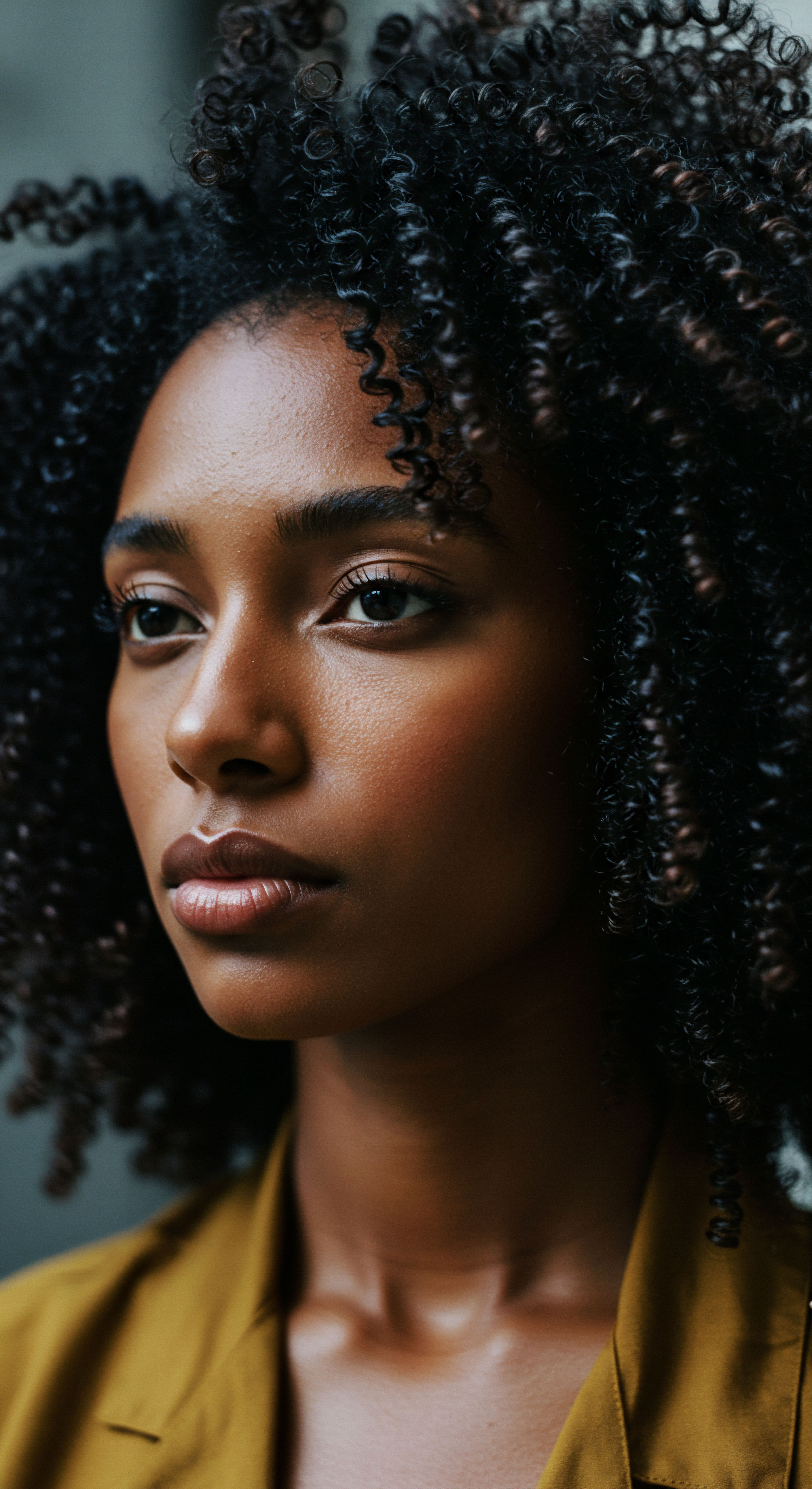
How Shape Shapes Moisture Interaction
The distinctive helical or spiral shape of coiled and curly hair profoundly influences its relationship with water. Unlike straight hair, where natural oils (sebum) produced by the scalp can easily travel down the smooth, circular shaft, the twists and turns of textured hair impede this journey. This uneven distribution of sebum means that the ends of coiled and curly strands often receive less natural lubrication, leaving them more prone to dryness. This inherent dryness then affects how the hair responds to external moisture.
Furthermore, the very curvature of these strands creates points of weakness along the hair shaft. These bends are areas where the cuticle layers can be more lifted or prone to damage, increasing the hair’s porosity. Hair Porosity describes the extent to which hair absorbs and retains water. Individuals with textured hair are often more likely to have porous hair than those with straight hair.
When hair is highly porous, its cuticles are more open, allowing water to rush in quickly. While this might seem beneficial, it also means that moisture can escape just as rapidly, leading to the sensation of dryness even after hydrating.
The unique helical structure of coiled and curly hair creates pathways for rapid moisture exchange, often leading to a drier feel.
A study published in International Journal of Cosmetic Science (2019) by Oliver et al. examined differences in water adsorption/desorption behavior across various hair types. Their findings revealed that African hair exhibited increased permeability compared to Asian and Caucasian hair, suggesting a higher diffusion capacity for water.
Paradoxically, Caucasian hair demonstrated a higher overall water absorption capability, but with a slower diffusion rate. This implies that while textured hair might take in water more quickly due to its structural characteristics, it also loses it more readily, highlighting a fundamental difference in how these hair types manage hydration at a molecular level.
This difference in permeability is also linked to the lipid content and order within the cuticle. African hair, despite having a higher overall lipid content, has a cuticle with more lipids arranged in a lower order bilayer. This contrasts with Caucasian hair, which has more ordered lipids in its outermost cuticle layer.
The arrangement and type of lipids on the hair’s surface play a significant role in its hydrophobicity – its ability to repel water. When this protective lipid layer is compromised or less ordered, hair becomes more hydrophilic, meaning it has a greater affinity for water, leading to increased swelling and potential fragility.
| Hair Type Feature Follicle Shape |
| Straight Hair Round |
| Coiled and Curly Hair Oval to Elliptical |
| Hair Type Feature Cuticle Lay |
| Straight Hair Generally flat, smooth |
| Coiled and Curly Hair Often raised, more open |
| Hair Type Feature Sebum Distribution |
| Straight Hair Even, travels easily |
| Coiled and Curly Hair Uneven, difficult to travel |
| Hair Type Feature Porosity Tendency |
| Straight Hair Lower |
| Coiled and Curly Hair Higher |
| Hair Type Feature These foundational differences in structure shape how each hair type interacts with environmental moisture. |

Ritual
Moving from the hidden depths of hair’s biology, we arrive at the practical realm of daily and periodic care, where understanding translates into action. The way we tend to our coils and curls is not merely a routine; it is a ritual, a thoughtful engagement with our hair’s inherent needs. For those with textured hair, this ritual becomes a constant dialogue with moisture, a response to the very distinct ways these strands behave when met with water. This section seeks to illuminate the purposeful practices that allow textured hair to truly thrive, offering guidance that is both informed by science and steeped in care.
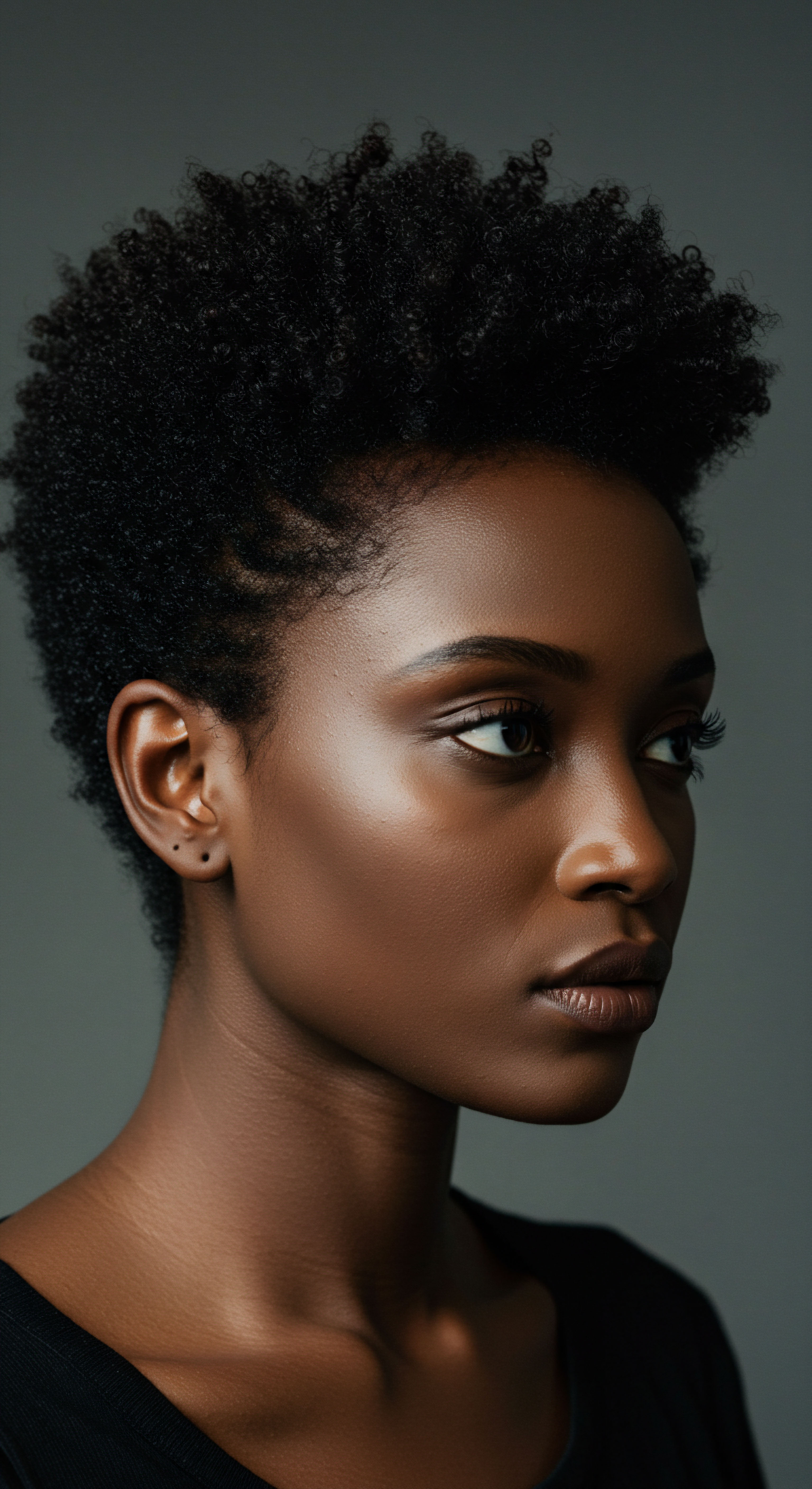
Why Does Hair React to Humidity?
The familiar phenomenon of hair expanding or contracting with changes in humidity is a direct consequence of the hair’s internal structure and its interaction with water molecules. Hair contains Hydrogen Bonds, which are relatively weaker than the disulfide bonds that give hair its permanent shape. These hydrogen bonds are highly sensitive to water.
When the air is humid, water molecules enter the hair shaft, breaking existing hydrogen bonds within the keratin structure. As these bonds break, the hair absorbs water, causing it to swell and often leading to an increase in volume and frizz.
For coiled and curly hair, with its already uneven cuticle layers and elliptical cross-section, this water absorption can be more pronounced. The lifted cuticles present more entry points for moisture, and the curved shape of the strand means that as it swells, the curl pattern can loosen or become less defined, contributing to the characteristic “frizz” often associated with humidity. This is a natural response, a testament to the hair’s hygroscopic nature, meaning its ability to absorb moisture from the air.
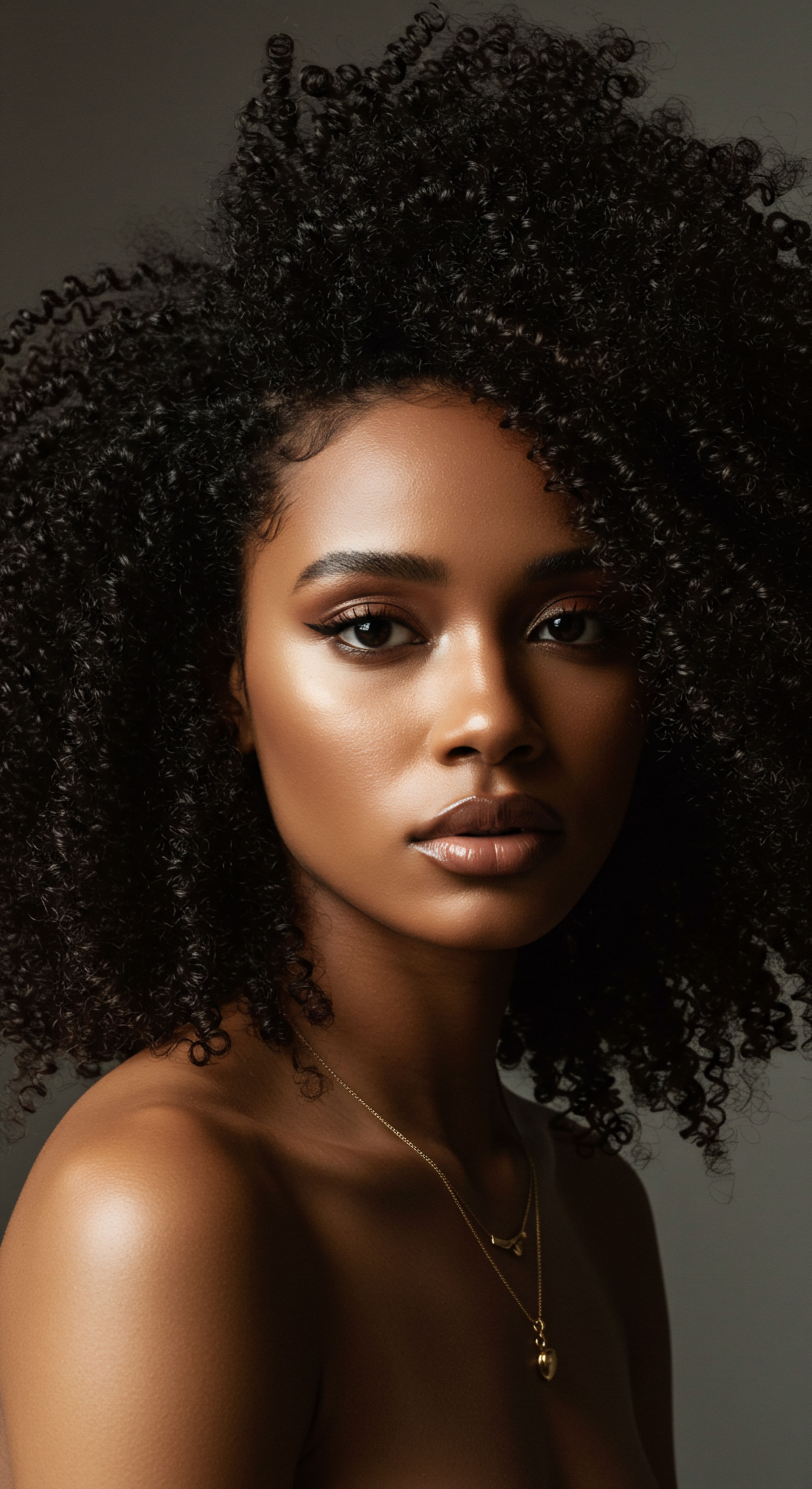
Hydration Versus Moisturizing What Is the Difference?
In the world of hair care, the terms “hydration” and “moisturizing” are often used interchangeably, yet they represent distinct concepts, especially for textured hair. Understanding this distinction is central to developing an effective care regimen.
- Hydration ❉ This refers to introducing water into the hair shaft. When we speak of hydrating hair, we mean allowing the hair to absorb water. This is crucial for maintaining elasticity and pliability. However, simply wetting hair with water, particularly for highly porous textured hair, is often not enough to sustain its moisture content. As noted earlier, healthy hair is naturally somewhat hydrophobic, designed to repel excessive water to protect its internal structure. Over-absorption of water can paradoxically lead to issues like brittleness and limpness as the hair swells and contracts repeatedly.
- Moisturizing ❉ This process involves sealing the water that has been introduced into the hair shaft and providing a barrier to prevent its rapid escape. Moisturizers, typically oils, butters, or creams, contain hydrophobic ingredients that create a protective layer around the hair fiber. This layer helps to smooth the cuticles, fill in any gaps, and thereby lock in the hydration, keeping the hair soft, supple, and defined for longer periods.
The aim, particularly for coiled and curly hair, is not simply to hydrate, but to moisturize effectively, creating a lasting balance. The LOC Method (Liquid, Oil, Cream) or LCO Method (Liquid, Cream, Oil) are popular layering techniques specifically designed for textured hair to achieve this sustained moisture.
Effective hair care for textured strands moves beyond mere hydration to a deliberate act of moisturizing, sealing in precious water.
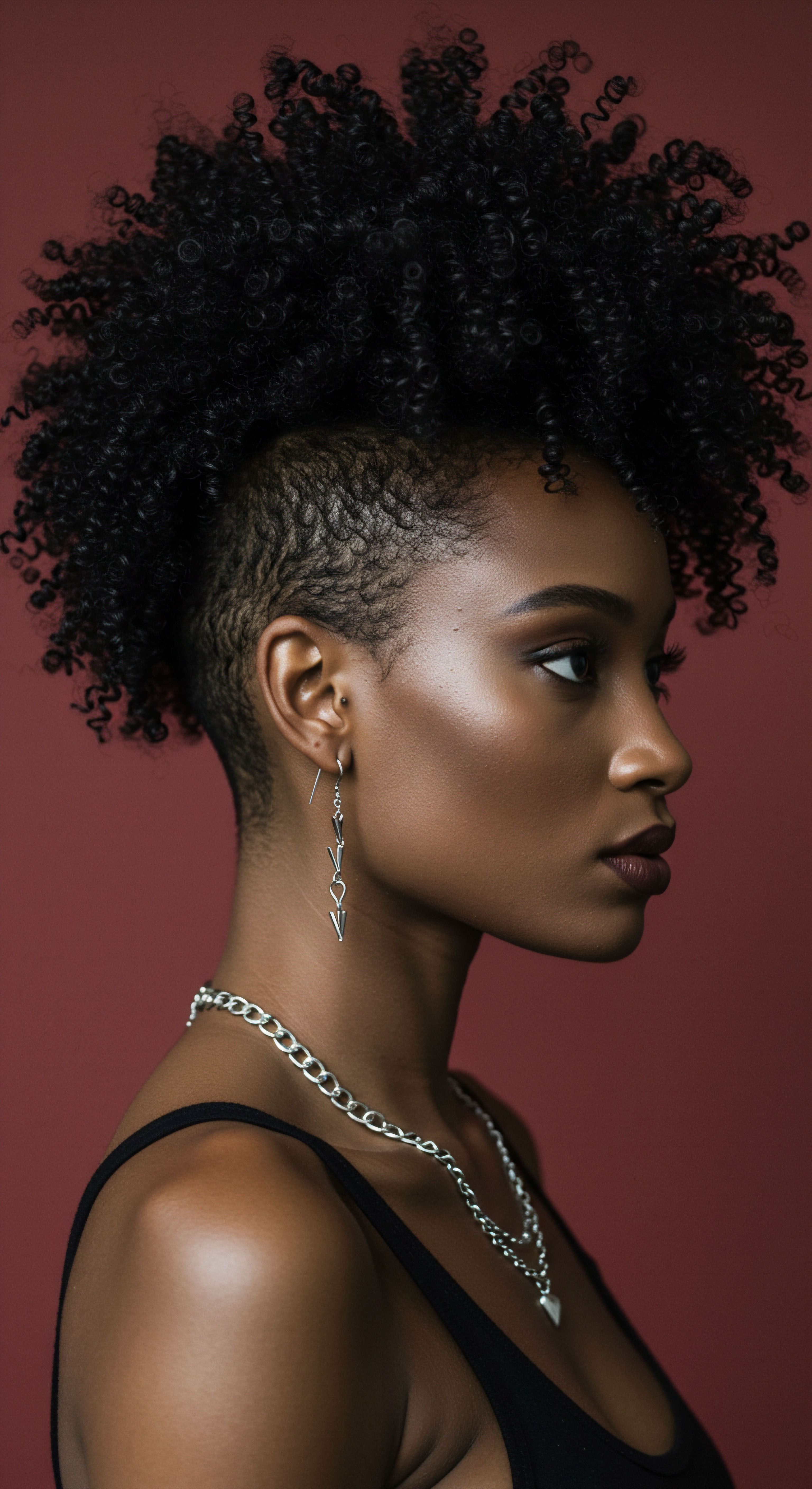
Protein Moisture Balance Is Key to Health?
Beyond the external application of moisture, the internal composition of hair, particularly its protein and moisture balance, is a significant determinant of its health and how it responds to environmental factors. Hair is approximately 90% keratin protein. This protein provides the hair’s structure, strength, and elasticity. When this protein structure is compromised, perhaps by daily wear, styling, or environmental elements, hair can become weaker and more susceptible to damage.
For coiled and curly hair, which often faces increased mechanical stress due to its unique shape and tendency to tangle, maintaining this balance is especially important. Too much protein without sufficient moisture can lead to hair feeling stiff, brittle, and prone to breakage, a condition sometimes called “protein overload”. Conversely, too much moisture without enough protein can leave hair feeling mushy, overly soft, and limp, lacking the structural integrity to hold its shape.
The challenge lies in finding the precise equilibrium for individual hair types. Products containing Hydrolyzed Keratin, wheat protein, or rice protein can help restore strength and structure by filling gaps in the cuticle layers. However, these must be paired with deep conditioning treatments that supply moisture. A general guideline for textured hair, which tends to be drier, suggests a higher ratio of moisturizing treatments to protein treatments, perhaps twice as many moisturizing sessions as protein applications.
| Hair Care Practice Hydrating |
| Purpose Introducing water into the hair shaft |
| Relevance to Textured Hair Essential for pliability, but water escapes quickly due to open cuticles. |
| Hair Care Practice Moisturizing |
| Purpose Sealing water in the hair shaft with oils/creams |
| Relevance to Textured Hair Critical for retention, creates a protective barrier, reduces dryness. |
| Hair Care Practice Protein Treatments |
| Purpose Restoring strength and structure |
| Relevance to Textured Hair Helps fortify fragile strands, balances softness from moisture. |
| Hair Care Practice These practices work in concert to support the unique needs of coils and curls. |

Relay
Stepping into the deeper currents of understanding, we recognize that the interaction between coils, curls, and moisture is far more than a simple chemical reaction; it is a story told through biology, culture, and environmental forces. This section endeavors to connect these disparate threads, exploring the profound implications of hair’s moisture response within a broader, more interconnected context. We move beyond the “how-to” to the “why,” grounding our discussion in advanced scientific findings and historical perspectives that reveal the true complexity of textured hair.
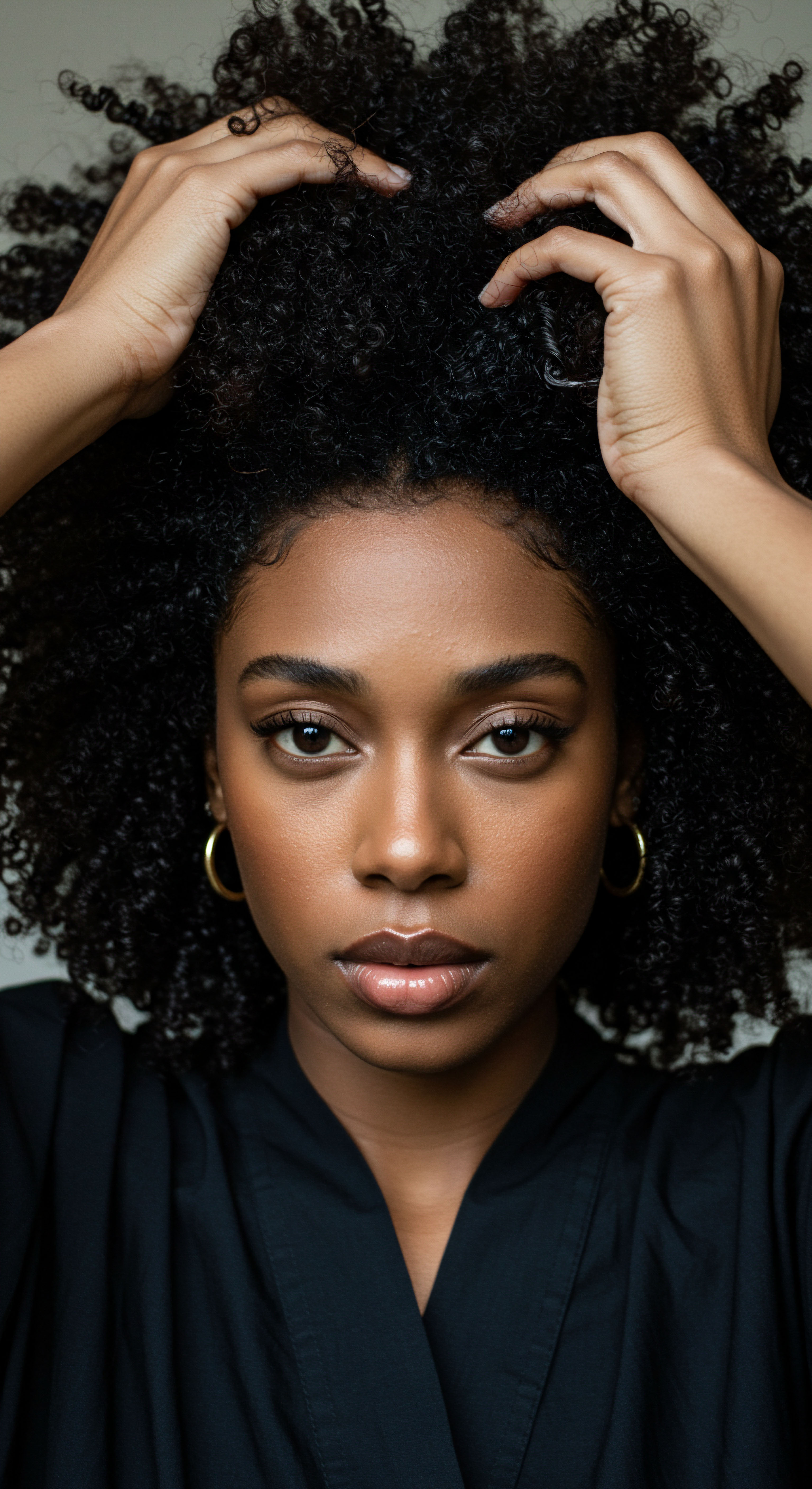
How Do Environmental Factors Influence Hair Moisture?
The environment plays a powerful, often overlooked, role in how coils and curls respond to moisture. Humidity, as we have touched upon, directly influences the hair’s hydrogen bonds, causing swelling and frizz. However, the interplay is more nuanced.
Dry climates can strip hair of its existing moisture, making it feel brittle and thirsty. Conversely, overly humid environments, while initially seeming to offer hydration, can lead to excessive water absorption, causing hygral fatigue – the weakening of hair from repeated swelling and drying.
Consider the concept of Water Sorption, which refers to the absorption and desorption of water by a material. Research has shown that African hair, while exhibiting higher permeability (meaning water can move in and out quickly), actually has a lower capacity to uptake moisture compared to Caucasian hair when exposed to increasing humidity. This seemingly counterintuitive finding suggests that while textured hair might absorb water rapidly, it does not necessarily retain it as effectively or to the same degree as other hair types, making it more prone to dryness even in humid conditions. This can lead to a constant cycle of moisture gain and loss, placing stress on the hair fiber.
This difference is partly attributed to the lipid composition of the hair cuticle. African hair cuticles possess more lipids with a lower order bilayer compared to Caucasian hair, which has more ordered lipids. This less ordered lipid arrangement can impact the cuticle’s ability to maintain its protective barrier against moisture fluctuations, contributing to the higher permeability and subsequent dryness observed in textured hair.

Does Cultural Heritage Shape Moisture Response?
The cultural dimensions of hair care, particularly within Black and mixed-race communities, offer a rich lens through which to view moisture response. For generations, traditional practices have centered on preserving and enhancing the natural moisture of textured hair, often predating modern scientific understanding.
Historically, in West African traditions, natural oils and butters like Shea Butter and Coconut Oil were used to moisturize hair in hot, dry climates. These practices were often paired with protective styles like braids and twists to maintain length and health. This deep cultural wisdom speaks to an intuitive understanding of the hair’s need for external lubrication and protection against environmental moisture loss. The practice of hair oiling, with roots dating back thousands of years in Ayurvedic traditions, also speaks to a global understanding of oil’s role in hair nourishment and protection.
The legacy of these practices is particularly poignant when considering the historical context of Black hair. During periods of enslavement, the deliberate shaving of heads aimed to strip individuals of their cultural identity. Despite this, traditional hair care methods, including the use of natural oils and protective styles, persisted as acts of resilience and cultural expression. This historical context underscores that the emphasis on moisture in textured hair care is not a recent trend, but a deeply ingrained cultural response to the hair’s intrinsic properties and environmental challenges.
The historical and cultural emphasis on moisture in textured hair care reflects a profound, ancestral understanding of its unique needs.
The unique physical characteristics of afro-textured hair, such as its elliptical cross-section and increased tendency to form knots and twists, contribute to its lower tensile strength and higher likelihood of structural damage. This inherent fragility, combined with lower moisture content and slower growth rates compared to other hair types, makes specialized care paramount.
A study published in Historical Perspectives on Hair Care and Common Styling Practices in Black Women (2025) highlights how hair texture was historically weaponized to create a caste system during plantation life, where those with straighter hair textures were granted “privilege”. This societal pressure to alter natural hair textures through chemical treatments like relaxers further underscores the cultural significance of understanding and preserving the hair’s natural state and moisture balance.
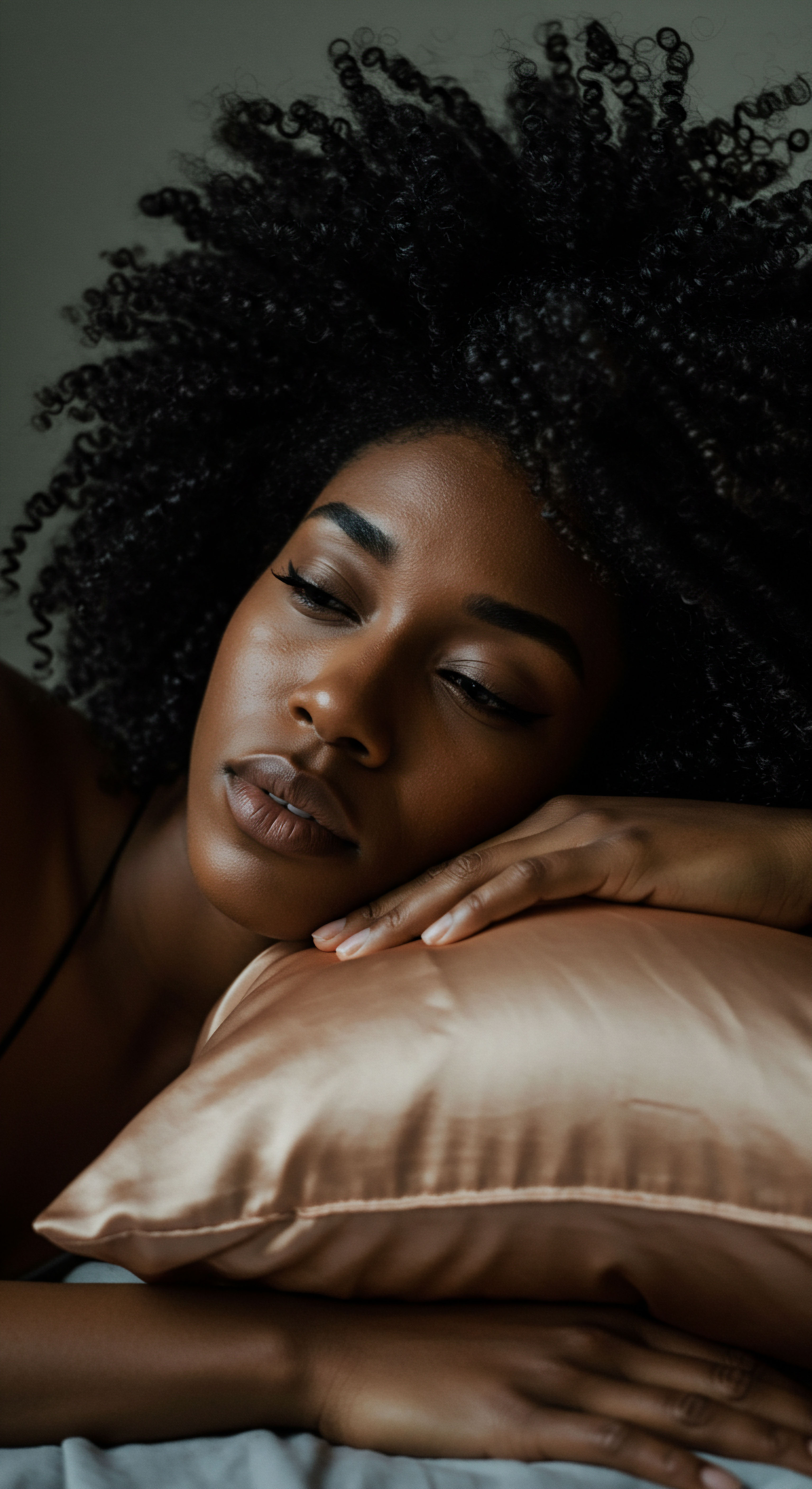
What Are the Microscopic Realities of Moisture Absorption?
Beyond the visible changes, the microscopic world within the hair shaft offers a deeper look into moisture absorption. The Cortical Cells within the hair shaft are not uniformly distributed in coiled hair, which can lead to areas of differing density and strength. This unevenness, combined with the spiral shape, creates points where the hair is more susceptible to swelling and changes in its mechanical properties when exposed to water.
Moreover, the Disulfide Bonds, which are strong covalent bonds giving hair its permanent shape, are distributed more unevenly in curly hair compared to straight hair, contributing to the curl or kink. While hydrogen bonds are responsible for temporary shape changes due to moisture, the underlying distribution of disulfide bonds influences the hair’s inherent ability to return to its coiled state after wetting and drying.
Consider a finding from a study by TRI Princeton, a leading research organization in hair science. Early publications from TRI in the 1980s began to uncover the unique breakage patterns seen in highly curly hair types. More recent research by TRI, in collaboration with Croda, has investigated the effects of protein treatments on breakage in textured hair.
This research indicates that while protein treatments can help, the structural differences in textured hair make it inherently more fragile and prone to breakage, particularly when wet. The absorption of water, while necessary, can temporarily weaken the hair, making detangling and styling crucial rituals performed with gentle hands.
The endocuticle, one of the fine layers within the cuticle, also plays a role in frizz. As this layer absorbs water from the atmosphere, it can cause the hair strands to plump up, contributing to the appearance of frizz. This microscopic swelling, coupled with the natural tendency of coiled hair to seek out more space due to its shape, creates the visible phenomenon of expanded volume and altered curl definition in humid conditions.
| Characteristic Water Sorption Rate |
| Straight Hair Slower diffusion, higher overall absorption |
| Coiled and Curly Hair Higher permeability, lower capacity to uptake |
| Characteristic Cuticle Lipid Order |
| Straight Hair More ordered lipids |
| Coiled and Curly Hair Less ordered lipids, higher lipid content |
| Characteristic Fragility When Wet |
| Straight Hair Less prone to mechanical damage |
| Coiled and Curly Hair More fragile, susceptible to breakage |
| Characteristic The internal composition and environmental interaction of hair types reveal complex and distinct moisture behaviors. |
Microscopic structural variations, from cuticle lipids to disulfide bonds, orchestrate the distinct moisture responses of coiled and curly hair.
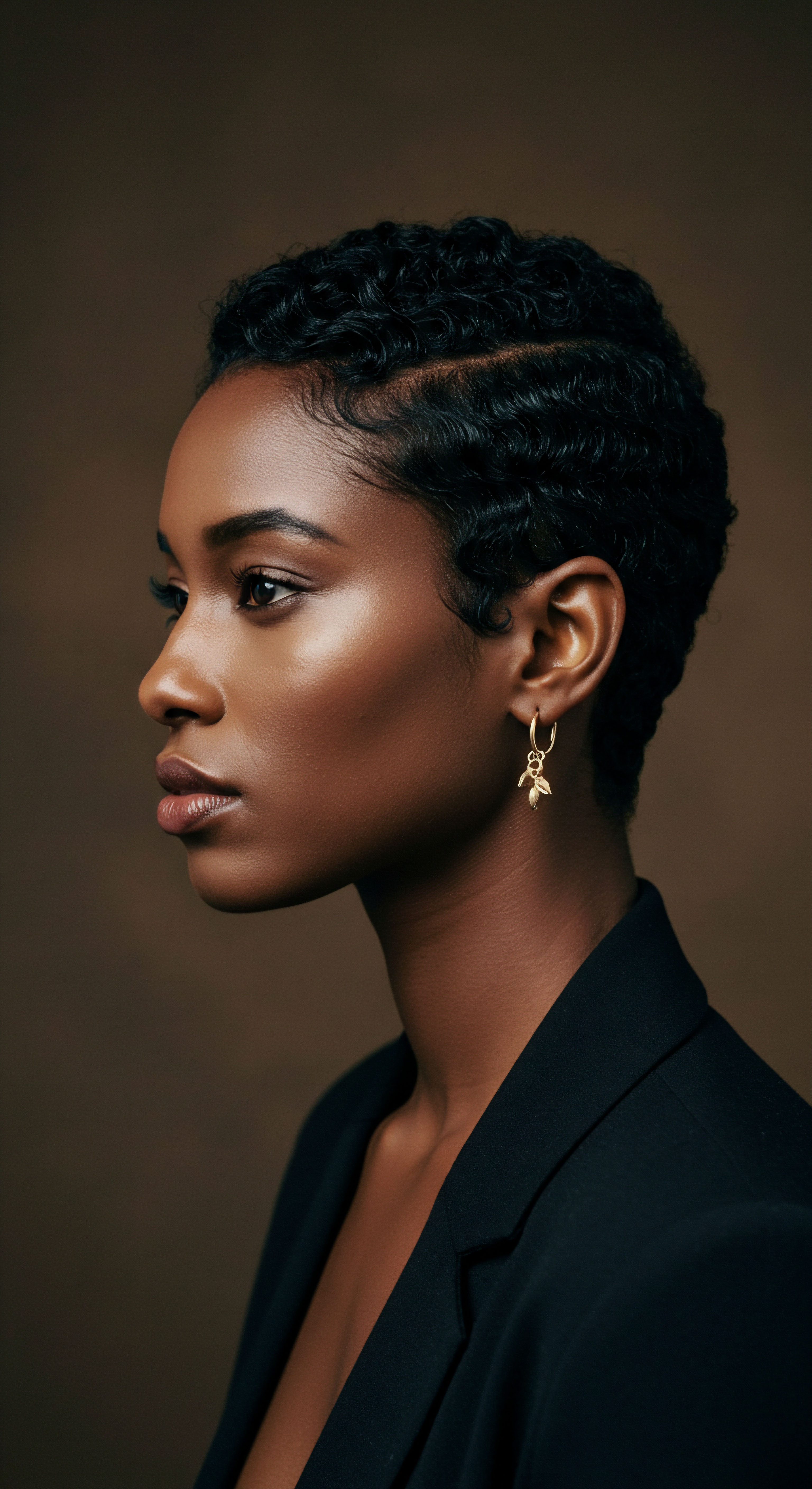
Reflection
The journey through the intricate world of coils and curls and their profound connection to moisture reveals a story of remarkable adaptation and inherent uniqueness. It is a testament to the diverse expressions of beauty found in the human experience, reminding us that understanding our hair is a pathway to deeper self-acceptance and a more informed approach to care. Each strand, with its particular helix and cuticle pattern, holds a narrative of its own, waiting to be acknowledged and celebrated. As we continue to learn, our ability to nurture these beautiful textures grows, allowing them to truly flourish in their natural glory.
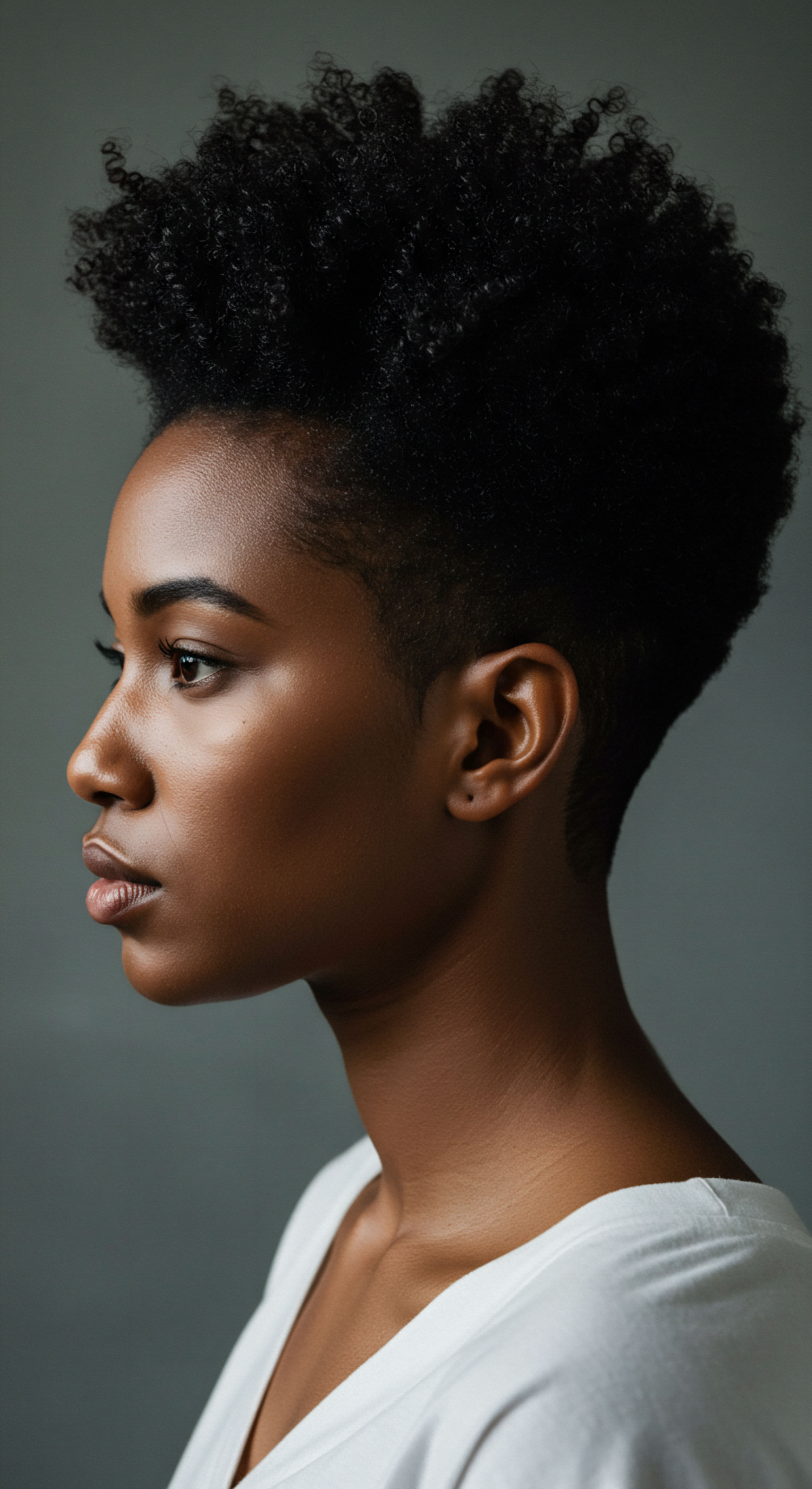
References
- Syed, Ali N. Curly Hair ❉ Structure, Properties, & Care. As I Am, 2024.
- Aguh, Crystal. The Fundamentals of Ethnic Hair ❉ A Dermatologist’s Perspective. 2017.
- Aguh, Crystal. 90 Days to Beautiful Curly Hair. 2018.
- Aguh, Crystal. Beginner’s Guide to Curly Hair Care for Kids. 2019.
- Davis-Sivasothy, Audrey. The Science of Black Hair ❉ A Comprehensive Guide to Textured Hair Care. Saja Publishing Co. 2011.
- Oliver, Marc A. et al. “Ethnic hair ❉ Thermoanalytical and spectroscopic differences.” International Journal of Cosmetic Science, vol. 42, no. 1, 2020, pp. 11-19.
- Malinauskyte, E. et al. “The effects of protein treatments on breakage in textured hair.” International Journal of Cosmetic Science, vol. 42, no. 5, 2020, pp. 493-500.
- Oladele, Deborah B. et al. “The Genomic Variation in Textured Hair ❉ Implications in Developing a Holistic Hair Care Routine.” MDPI Cosmetics, vol. 9, no. 4, 2022, p. 77.
- Goldin, Augusta. Straight Hair, Curly Hair. Thomas Y Crowell, 1966.
- Kowalski, Kathiann. “Science works to demystify hair and help it behave.” Science News Explores, 14 Nov. 2024.
- Perez, M.G. “A children’s book about the science of curly hair.” KPBS Public Media, 15 Feb. 2023.
- Rele, Ashish S. and R. B. Mohile. “Effect of mineral oil, sunflower oil, and coconut oil on prevention of hair damage.” Journal of Cosmetic Science, vol. 54, no. 2, 2003, pp. 175-192.
- Loussouarn, Genevieve, et al. “Hair shape and curliness ❉ A comprehensive review.” International Journal of Cosmetic Science, vol. 37, no. S1, 2015, pp. 11-18.
- Koch, Sandra L. et al. “Impact of Hair Type, Hair Sample Weight, External Hair Exposures, and Race on Cumulative Hair Cortisol.” Psychoneuroendocrinology, vol. 120, 2020, p. 104797.
- Cruz, Carolina F. et al. “Hair lipids ❉ A comprehensive review.” Journal of Cosmetic Science, vol. 64, no. 4, 2013, pp. 249-265.